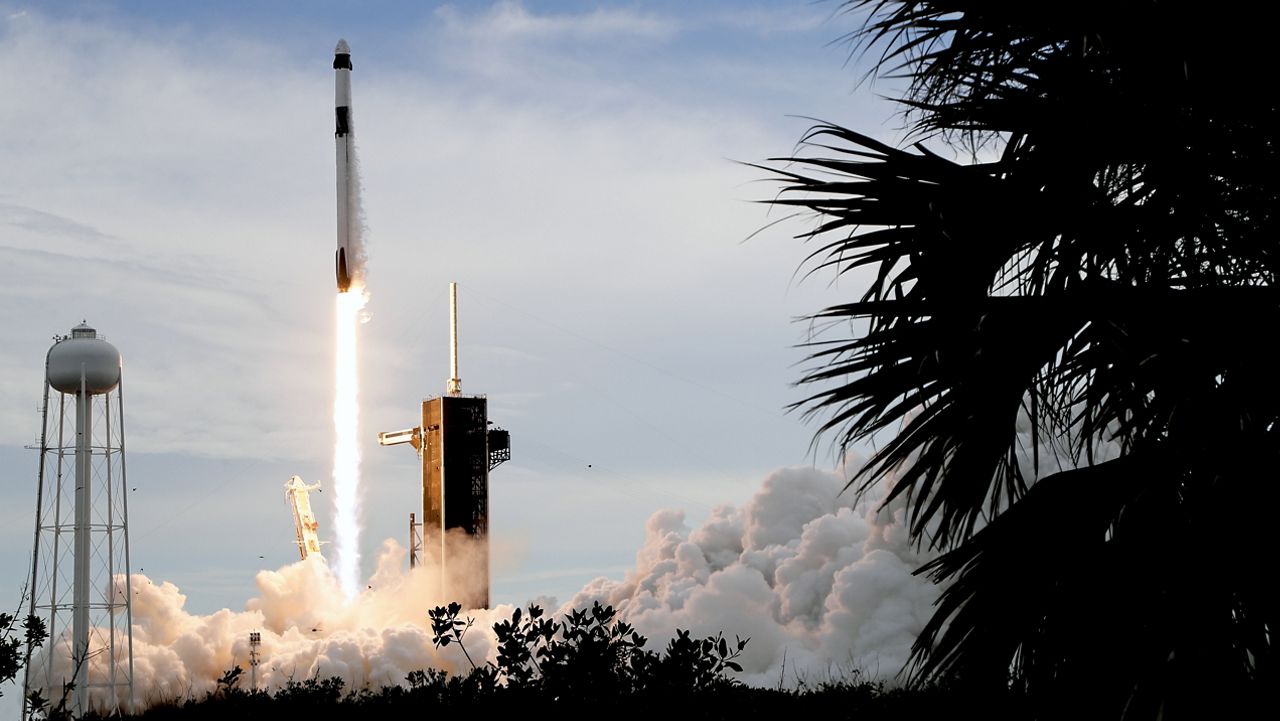If you’ve ever experienced a rocket launch up close, you’ve probably heard the loud, window rattling boom afterward. That thunderous noise is called a sonic boom.
The simplest definition is a sonic boom happens when rockets and other aerospace vehicles fly faster than the speed of sound, or 767 mph.
But digging deeper, according to NASA, when an aircraft exceeds that speed, it creates a cone of pressurized air molecules that move outward in all directions and toward the ground. As the cone of air spreads, the sharp release of pressure creates the sonic boom.
Watch the video below, and listen to the sonic boom produced by a first-stage booster of a SpaceX Falcon 9 rocket as it touches down on its landing pad.
Several factors influence a sonic boom, including the weight, shape and size of the aircraft and vehicle. Also, the altitude, flight path and even atmospheric conditions, or the weather, can determine if a sonic boom makes it to you on the ground.
The lower the altitude, the stronger a sonic boom can become, since there is less distance for it to travel. Maximum intensity of a sonic boom is directly beneath an aircraft, and the intensity weakens as it spreads further away.
The sonic boom carpet describes the width of a boom. NASA says that the “boom carpet” is about one mile for every 1000 feet of altitude. The higher the aircraft, the wider the sonic boom it can produce, although dampened, the farther out it travels.
Mentioned earlier, factors like the size and weight of an aircraft will affect the sonic boom. The larger and heavier the vehicle, the stronger the sonic boom can get, as it displaces more air. If a vehicle is longer and more slender, the shock waves will end up weaker.
Wind speed and direction can affect the intensity of sonic booms. The same goes for temperature and pressure as well. Also, terrain features like hills, valleys and mountains can amplify them, reflecting the shock waves.
Commercial airliners don’t create sonic booms, since they don’t travel at supersonic speeds. However, aside from rockets, many military jets are more than capable of producing their own sonic booms.
The video below shows a sonic boom outside of Washington, D.C. after F-16s responded to an unresponsive Cessna jet that entered an unrestricted airspace in June 2023.
If you live near Kennedy Space Center in Central Florida, SpaceX Starbase in southern Texas or any military base, there is no reason to worry if you hear a sonic boom.
Even though the jarring boom can rattle your windows and scare your pets, it’s rarely linked to any structural damage or hearing loss.
Measured in pounds per square foot of “overpressure,” supersonic aircraft typically only produce one to two pounds of overpressure.
Our team of meteorologists dive deep into the science of weather and break down timely weather data and information. To view more weather and climate stories, check out our weather blogs section.
